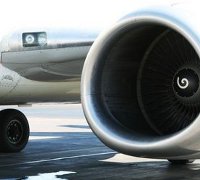
The Office of Naval Research’s (ONR) ‘Jet Noise Reduction Program’ has started preliminary research to dampen jet noise by redesigning engines and experimenting with new ways to retrofit existing jet and other aircraft models with high grade noise-reducing gear. Recent evaluation of the Navy’s inventory has provided the ONR a distinct opportunity to not only increase the awareness of hearing loss from harsh jet noise, but also, for the first time, to discuss comprehensive solutions to the issue.
Unfortunately, the costs and extensive engineering involved have prevented too much progress from being made. Deputy Manager for this venture, Brenda Henderson, could not determine any specific timetable for changes in jet engines based off of this research. The Navy is weary to duplicate changes made to commercial jets that have made engineering steps to address harsh noise exposure. Such radical alterations for the sake of decibel reduction risks potential, long-term, permanent setbacks to power and performance. “We have to consider the impact of a noise-reduction device on the system.” Henderson stated.
The movement is very much in the early stages, as the first step to the research is not to examine specific engines or major changes to the fleet, but to collect enough efficient preliminary data. To date, the biggest accomplishment to the project is the establishment of a definite system that measures the noise and interprets the data for tactical military aircrafts.
Changes have stalled for other reason as well. For example, it is difficult to attribute hearing loss solely to jet noise exposure. Sailors face a multitude of other damaging job related noises as well as any off-duty interests, like attending a rock concert or going to a shooting range.
The ONR has provided close to $4 million funding for this research. Research teams from Virginia Tech, California Institute of Technology, Innovative Technology Applications Co. University of Illinois and Penn State University are working with the data and will meet for their first program review in June.
Sailors are regularly evaluated for hearing loss. Unfortunately, hearing degradation is steadily rising: in 2012, 5% of sailors suffered acoustical trauma and clinically defined hearing degradation and 9% in 2013. Aviation technicians, electronic technicians, and special operators were the most common victims of noise-exposure hearing loss.
If no engineering modifications will be made to the engines themselves, the navy does in-fact make strong efforts to counter noise-induced hearing loss. For instance, there are designated areas where single protection or double protection must be worn. Single ear protection involves wearing foam earplugs or ear-covering headphones that can reduce noise by around 30 decibels. Double protection means wearing both earplugs and headphones. Areas that mandate double protection include flight decks, machinery spaces, and when using tools like needle guns.
Check back in to Find Hearing Aids for more updates about this exciting development or keep watching the skies for those silent jet planes. If you or someone you know has experienced hearing loss from work-related issues like these Navy Sailors, please contact one of our representatives today. They will help you search for the best hearing aid specialist in an area near you!
Call 877-631-9511 for FREE Consultation



